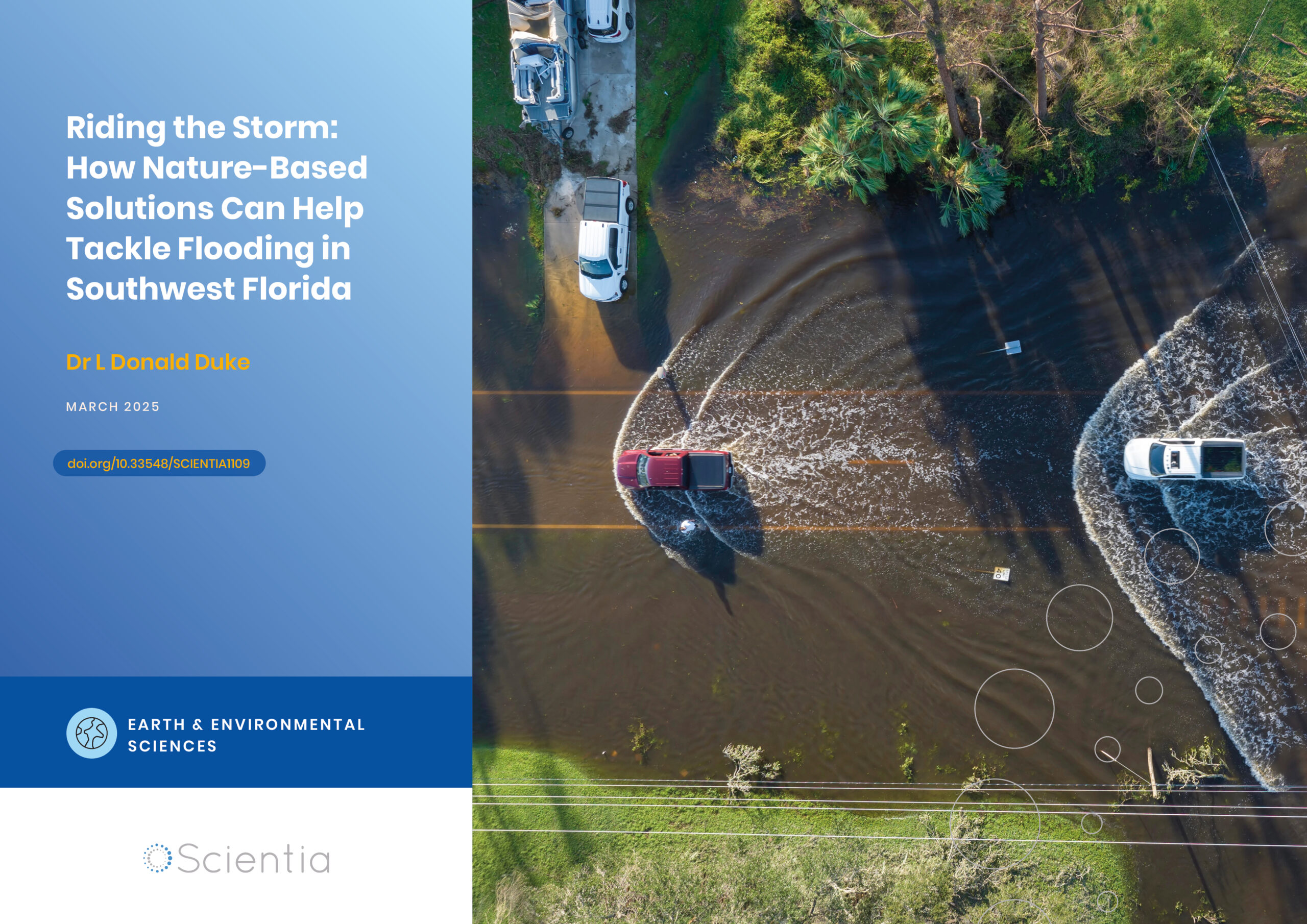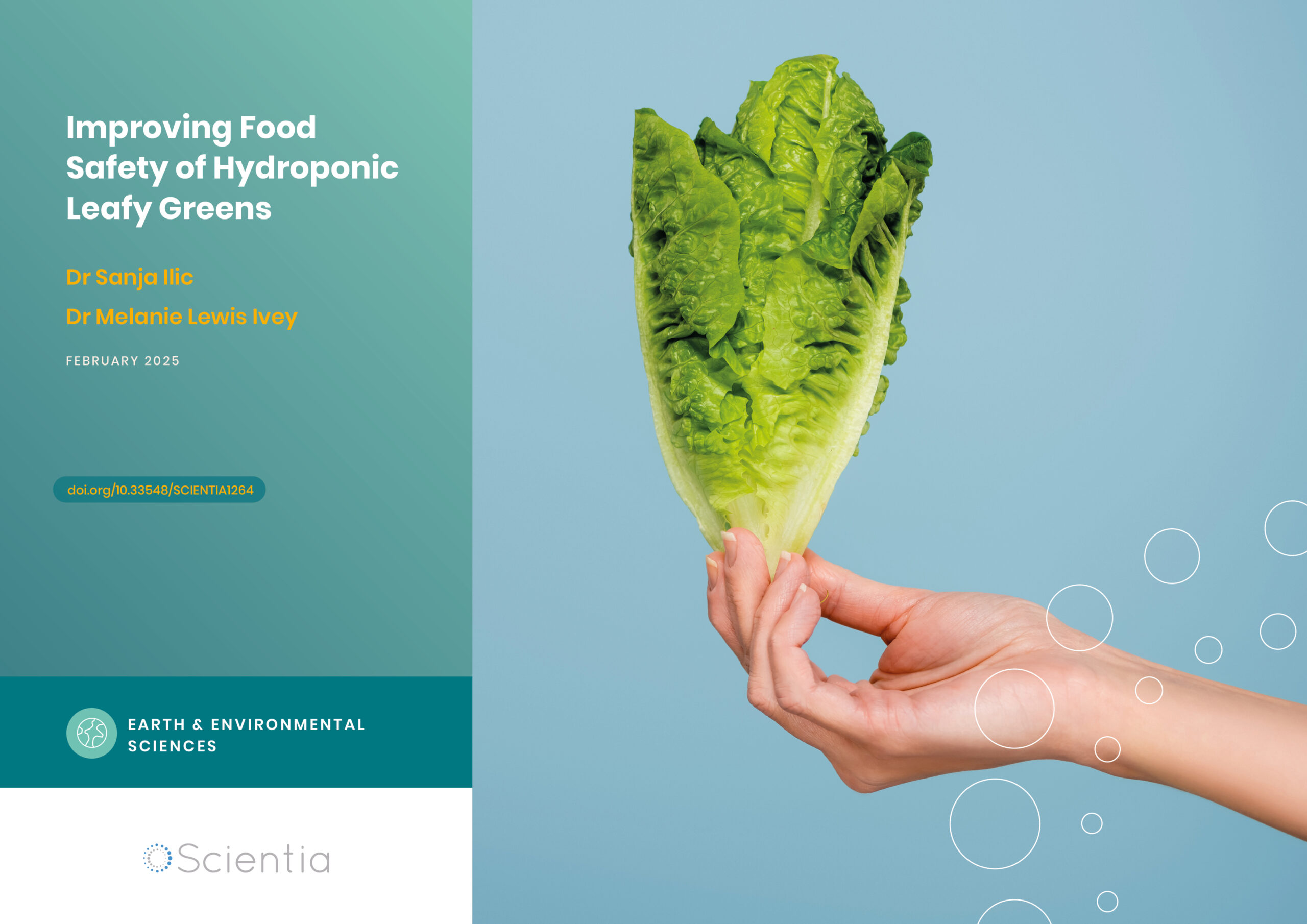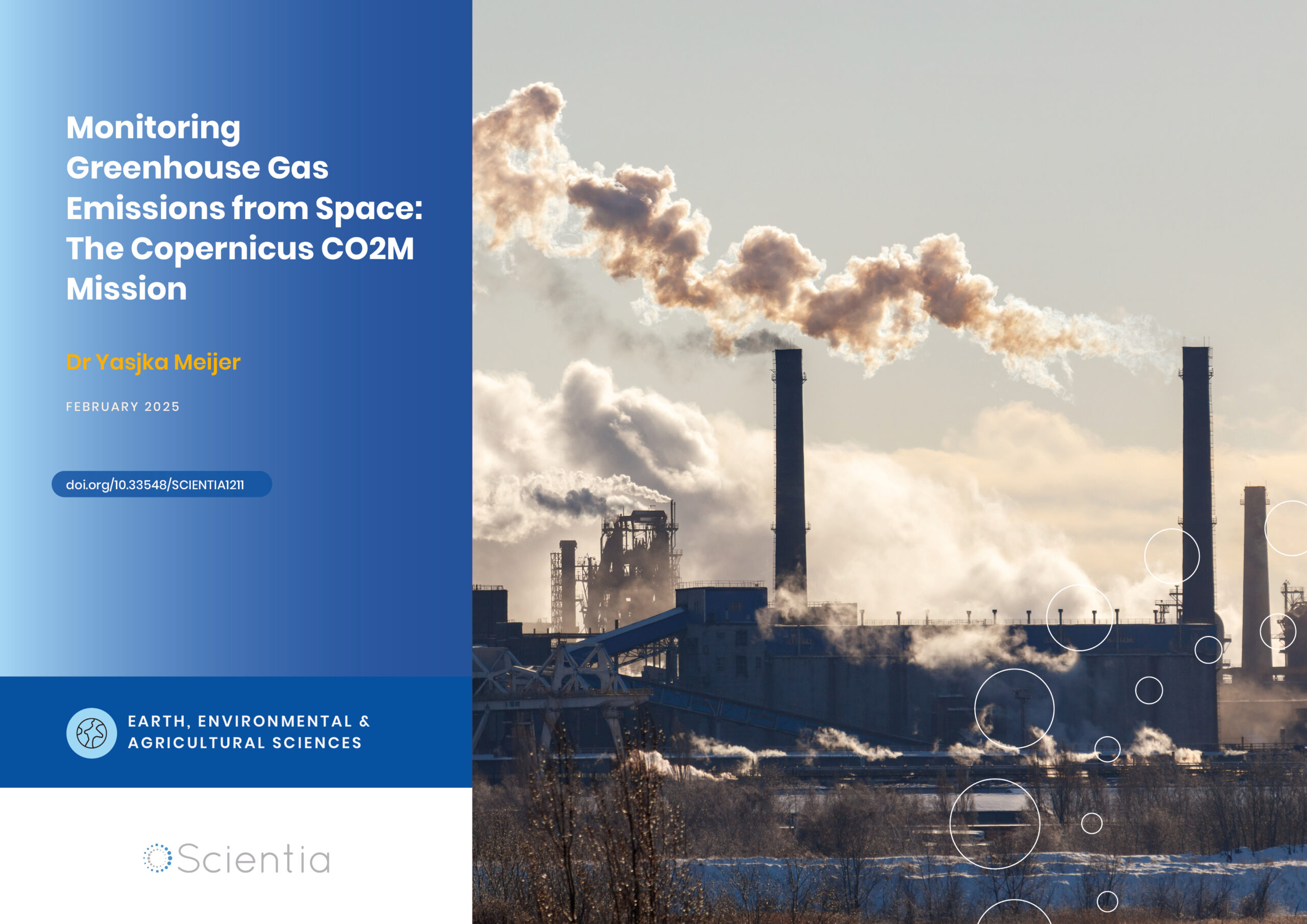Dr Jenny Hand | Seasonal Particulate Matter Patterns Identify Emission Sources
Particulate matter in the atmosphere affects air quality, which can impact visibility, our health, and the climate. Since amendments to the 1990 Clean Air Act in the United States, decreases in particulates derived from anthropogenic emissions have been achieved. Dr Jenny Hand from the Cooperative Institute for Research in the Atmosphere has utilised a monitoring network across the United States to define seasonal and regional trends in atmospheric particulate matter from 2000 through 2021, identify their sources, and critically, make recommendations for future target emission reductions.
Atmospheric Particulate Matter
Microscopic particles suspended in the atmosphere, hereafter referred to as particulate matter, comprise many different species (e.g., sulphate, nitrate, chloride, mineral dust, organic and elemental carbon), which are derived from both natural and anthropogenic (human activities) sources. These species have different lifespans in the atmosphere. They can vary by season, subsequently affecting air quality, which can potentially have widespread impacts on visibility, our health, the climate, cloud processes, and ecology.
On the back of the Clean Air Act amendments in 1990, some anthropogenic emissions have decreased, leading to a reduction in some particulate matter species and, consequently, an improvement in air quality in remote parts of the United States. There are, however, many more opportunities for emission reduction that would further reduce atmospheric particulate matter and improve air quality.
Dr Jenny Hand of the Cooperative Institute for Research in the Atmosphere, alongside Drs Anthony Prenni and Bret Schichtel of the National Park Service’s Air Resources Division, have analysed data from a network of monitoring stations across the United States. They have defined seasonal and regional trends in particulate matter, identified their likely sources, and scoped future target sources to further reduce atmospheric particulate matter.
The IMPROVE Network
Drs Hand, Prenni, and Schichtel obtained data collected by the Interagency Monitoring for Protected Visual Environments (IMPROVE) network – a network of 155 monitoring sites located across the United States, predominantly based in remote or rural settings. The IMPROVE network tracks particulate matter composition across the United States using filters, which are collected and subsequently analysed.
Drs Hand, Prenni, and Schichtel analysed daily suspended particle data from 2000 through 2021 for remote and rural sites across all regions of the United States, subsequently calculating seasonal (i.e., winter, spring, summer, and autumn) and regional trends in the concentration of particulates in the atmosphere. They used spatial (i.e., areal) and seasonal trends in particulate matter to compare to emission sources and comment on the influence(s) of different sources on air quality. This is important because being able to identify impacts from certain species of particulate matter can be used to feed into future strategies or regulations that can target specific sources.

Great Smoky Mountains National Park: 1990 (left) versus 2022 (right).
Credit Jenny Hand.
Seasonal Variation in Atmospheric Particulate Matter
When analysing the seasonal average trends of atmospheric particulate matter, Drs Hand, Prenni, and Schichtel have shown that during the study period (2000–2021), the strongest reductions in particulate matter occurred in the Eastern United States, especially during the summer and autumn. The reduction of particulate matter was on the order of 6–7% per year. This strong reduction was predominantly driven by significant reductions in sulphate concentrations (3–14% per year), which displayed substantial year-round reductions. However, less significant nitrate and organic carbon reductions also contributed to this trend. This was not the case for the Western United States, however, which displayed minor reductions in particulate matter in the winter and spring (<3% per year) and slightly positive but insignificant increases (generally <1%) in the summer and autumn.
These seasonal trends point to a strong spatial gradient between the Eastern and Western United States during the summer and autumn. This spatial gradient can be attributed to particulate matter sources with regional influences, such as biomass smoke emissions (i.e., wildfires). The spatial gradient observed in the summer and autumn is not as prominent during the winter and spring, with widespread reductions generally seen across the United States, although remaining strongest in the east.
Regional Variation in Atmospheric Particulate Matter
Drs Hand, Prenni, and Schichtel found that the regional average trends displayed near-constant reductions in particulate matter across all seasons across most of the United States. These regional reductions were strongest in the northeast and southeast during the summer (4–5% per year) and comparable to seasonal data trends. The Midsouth and Central regions of the United States displayed year-round reductions in particulate matter (2–3% per year), although to a lesser degree than the Eastern regions. Trends in the Western regions differed, with more notable reductions in particulate matter in the winter and spring, although reductions were insignificant in summer and autumn.
The insignificant reductions observed in particulate matter in the Western regions during the summer and autumn are attributed to contributions of organic carbon to the atmosphere, which are more significant in the Western compared to Eastern (where year-round reductions are observed) United States. These increased contributions of organic carbon align with the United States’ wildfire fire season, which would result in the addition of organic carbon to the atmosphere, muting the year-round reduction in particulate matter observed across the United States. The influence of the fire season in contributing particulate matter to the atmosphere across the Western United States is now more clearly apparent due to the regulation of some anthropogenic sources resulting in particulate matter reductions.
What Have We Learnt?
Drs Hand, Prenni, and Schichtel observed reductions in particulate matter across almost all regions and all seasons in the United States. Overall, the annual average trend for the United States represented a 1.8% reduction per year in atmospheric particulate matter, primarily driven by significant reductions in sulphate emissions. Eastern regions of the United States displayed the strongest reductions in atmospheric particulate matter, while Western regions generally displayed the weakest.
On this basis, Drs Hand, Prenni, and Schichtel conclude that regulatory activity does work and helps reduce particulate matter in the atmosphere, improving air quality. However, as particulate matter from currently regulated sources decreases, the proportion of unregulated anthropogenic (e.g., oil, gas, agriculture) and natural (e.g., wildfires, desert dust) sources will increase comparatively, with contributions from natural sources at risk of being exacerbated by the effects of climate change and land-use changes – wildfires could potentially become more frequent and/or larger. Therefore, attention must now be directed to these sources to continue improving air quality across the United States.
SHARE
DOWNLOAD E-BOOK
REFERENCE
https://doi.org/10.33548/SCIENTIA1063
MEET THE RESEARCHER

Dr Jenny Hand
Cooperative Institute for Research in the Atmosphere (CIRA)
Colorado State University
Fort Collins, CO
USA
Dr Jenny Hand obtained a double BSc in Physics and Astronomy from the University of Kansas, USA, in 1995, and subsequently, her MSc and PhD in Atmospheric Science from Colorado State University, USA, in 1997 and 2001, respectively. Dr Hand joined the Cooperative Institute for Research in the Atmosphere (CIRA), Colorado State University in 2003 as a Research Scientist, where she is a Senior Research Scientist and Fellow, working in collaboration with the National Park Service (NPS), and serves as the Principal Investigator and Supervisor of the CIRA – NPS cooperative agreement. Dr Hand’s research interests include understanding the properties and long-term patterns of atmospheric aerosols, making use of a United States-wide monitoring networks.
CONTACT
E: jlhand@colostate.edu
W: https://www.cira.colostate.edu/staff/hand-jenny/
KEY COLLABORATORS
Dr Anthony Prenni, National Park Service
Dr Bret Schichtel, National Park Service
FUNDING
National Park Service Air Resources Division
FURTHER READING
JL Hand, AJ Prenni, BA Schichtel, Trends in seasonal mean speciated aerosol composition in remote areas of the United States from 2000 through 2021, Journal of Geophysical Research: Atmospheres, 2024, 129, 1-22. DOI: https://doi.org/10.1029/2023JD039902

REPUBLISH OUR ARTICLES
We encourage all formats of sharing and republishing of our articles. Whether you want to host on your website, publication or blog, we welcome this. Find out more
Creative Commons Licence (CC BY 4.0)
This work is licensed under a Creative Commons Attribution 4.0 International License. 
What does this mean?
Share: You can copy and redistribute the material in any medium or format
Adapt: You can change, and build upon the material for any purpose, even commercially.
Credit: You must give appropriate credit, provide a link to the license, and indicate if changes were made.
SUBSCRIBE NOW
Follow Us
MORE ARTICLES YOU MAY LIKE
Dr L Donald Duke | Riding the Storm: How Nature-Based Solutions Can Help Tackle Flooding in Southwest Florida
Florida grapples with mounting challenges related to inland flooding due to heavy precipitation, along with coastal flooding from rising sea levels and coastal storms. One important approach to address precipitation-originating flooding is to embrace land use practices runoff management in the upstream portions of at-risk watersheds, where sustainable design can relieve the pressures on drainage systems from continuing dense urban development in the low-lying Florida landscape. Dr L Donald Duke, from The Water School at Florida Gulf Coast University, plays a pivotal role in this endeavour. His work encompasses creating and evaluating flood-resilient land use practices and planning to manage stormwater runoff on the watershed scale.
Improving Food Safety of Hydroponic Leafy Greens
Hydroponic farming is experiencing rapid growth worldwide, offering a sustainable and efficient method of producing fresh, nutrient-rich crops. However, the unique conditions of hydroponic systems also present complex food safety challenges. Dr Sanja Ilic and Dr Melanie Lewis Ivey, researchers at The Ohio State University, are at the forefront of efforts to understand and mitigate the risks of human pathogen contamination in commercial hydroponic production. Their pioneering work is providing crucial insights and practical guidance to help ensure the safety and nutritional value of hydroponically grown leafy greens.
Dr Yasjka Meijer | Monitoring Greenhouse Gas Emissions from Space: The Copernicus CO2M Mission
Atmospheric concentrations of carbon dioxide (CO2) and methane (CH4) have been steadily rising due to human activities, contributing to global climate change. Dr Yasjka Meijer from the European Space Agency is responsible for the objectives and requirements of the Copernicus Anthropogenic Carbon Dioxide Monitoring (CO2M) mission – a constellation of satellites that will enable the monitoring of anthropogenic greenhouse gas emissions from space with unprecedented accuracy and detail. This groundbreaking mission aims to support international efforts to reduce emissions and combat climate change.
Renewable Fuel for a Generation of Green Batteries
Revolutionizing energy production has been integral to combatting climate change and reducing our dependence on limited natural resources, but complementary advances in energy storage have been lacking. Dr Thomas Guarr and Dr David Hickey from Michigan State University lead their team in investigating a counterintuitive molecular mechanism which could support a wave of green, renewable, and cheap batteries. If practical, this technology might be the crucial leap towards an entirely green energy system.





